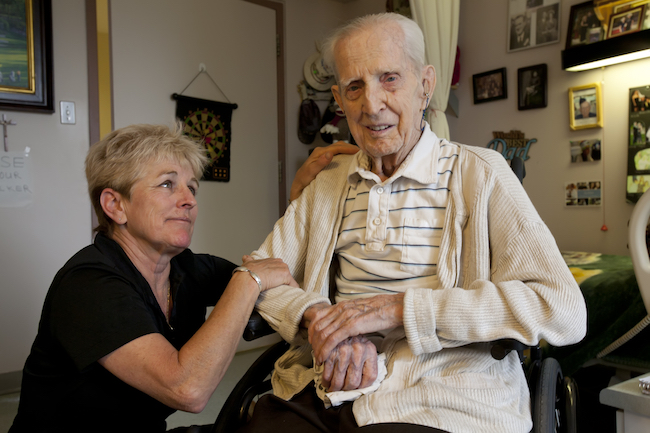America’s seniors and senior service providers throughout the country will join to celebrate National Aging in Place Week from October 15-21, 2017. National Aging in Place Week is an annual effort to expand awareness of the Aging in Place movement and the availability of the means for seniors to remain in their homes for as long as they would like.
“Aging in Place” refers to our ability to live safely and comfortably in our homes as we get older, often to the very end of our lives. Homes that are suitable for aging in place are those that are “accessible” to us as our mobility decreases. Accessible homes include those on a single story that remove the dangers and effort of climbing stairs on creaky legs. Multi-level homes with a master bedroom on the first floor, as well as homes with elevators or stairlifts, are also suitable for aging in place but tend to be more costly than single
story homes. Other features of accessible houses include the absence of stairs to get in or out of the house, good lighting, wide doorways for walkers and wheelchairs and walk-in showers or baths.
Purposeful aging in place has grown in popularity and celebrated by the National Aging in Place Week and the National Aging in Place Council that promotes the positive outcomes of older adults having a choice in their care and living arrangements. In addition to Certified Aging-In-Place Specialists (CAPS) there are many more professionals trained to fill the growing need in this service model for older adults such as the Senior Home Safety Specialist™ designation offered by Age Safe America.
Industries that have special programs or certifications include Real Estate, Occupational Therapy, Physical Therapy and Relocation specialists. Many communities are now fully engaged and committed to exploring ways to better serve older adults by developing action plans that address future needs and ensure that the necessary services are in place when they are needed. Recognizing that a home is filled with memories and is more than just a place to stay, companies are engaged in accommodating the elderly for years of comfortable living. These companies provide comprehensive services ranging from household cleaning to occupational therapy to assist in maintaining maximum quality of life.
There are many things adult children of seniors can do to make their parents’ homes safer and more accessible, regardless of how much — or how little — the family can afford to spend.
No-Cost or Low-Cost Modifications
De-clutter: Seniors tend to have accumulated a lot of possessions over the years, but too many belongings can put them at risk for falls. Remove clutter so that rooms are as sparse as possible.
Re-organize: Put the items your parents use often in the most accessible places. This is especially important in the kitchen and bathrooms.
Adjust lighting: Nightlights can be placed throughout the home (especially in hallways and bathrooms) to improve visibility. It’s also a good idea to replace low-wattage light bulbs with high-wattage bulbs.
Reduce slip risk: Help fall-proof your parents’ flooring by securing rugs with non-skid pads or tacks and using non-skid wax on the floors. Wet floors in bathrooms are also a major slip risk for seniors. Slip-resistant rugs are perfect for bathrooms because they won’t move even when the floors are wet.
Medium-Cost Modifications
Safe-T-element Cooking System: Once installed over the stove top, this device will shut off burners if they’re accidentally left on and get too hot.
Security poles with curved grab bars: Install these next to the shower, toilet, couch and/or bed to help your parents safely rise, sit, and get in and out of difficult-to-navigate spaces.
Ramps: Parents who use a wheelchair or have mobility issues will especially appreciate this ease of access to and from their homes…and inside their homes.
Higher-Cost Modifications
Stair lifts: These mechanical devices will safely transport a parent up or down stairs on a seat that attaches to a track that’s installed on the stairs.
Walk-in tubs: These tubs have a door that opens so seniors don’t have to step over the side to get in or out. They also usually come with a built-in seat and grab bars for safe bathing.
Sensors: Incredible new technology — in the form of sensors placed throughout the home — can help you keep tabs on how your elderly loved ones are doing. If your parents interrupt their daily pattern of behavior (such as not getting out of bed or not returning from a trip to the bathroom), you can be notified.

